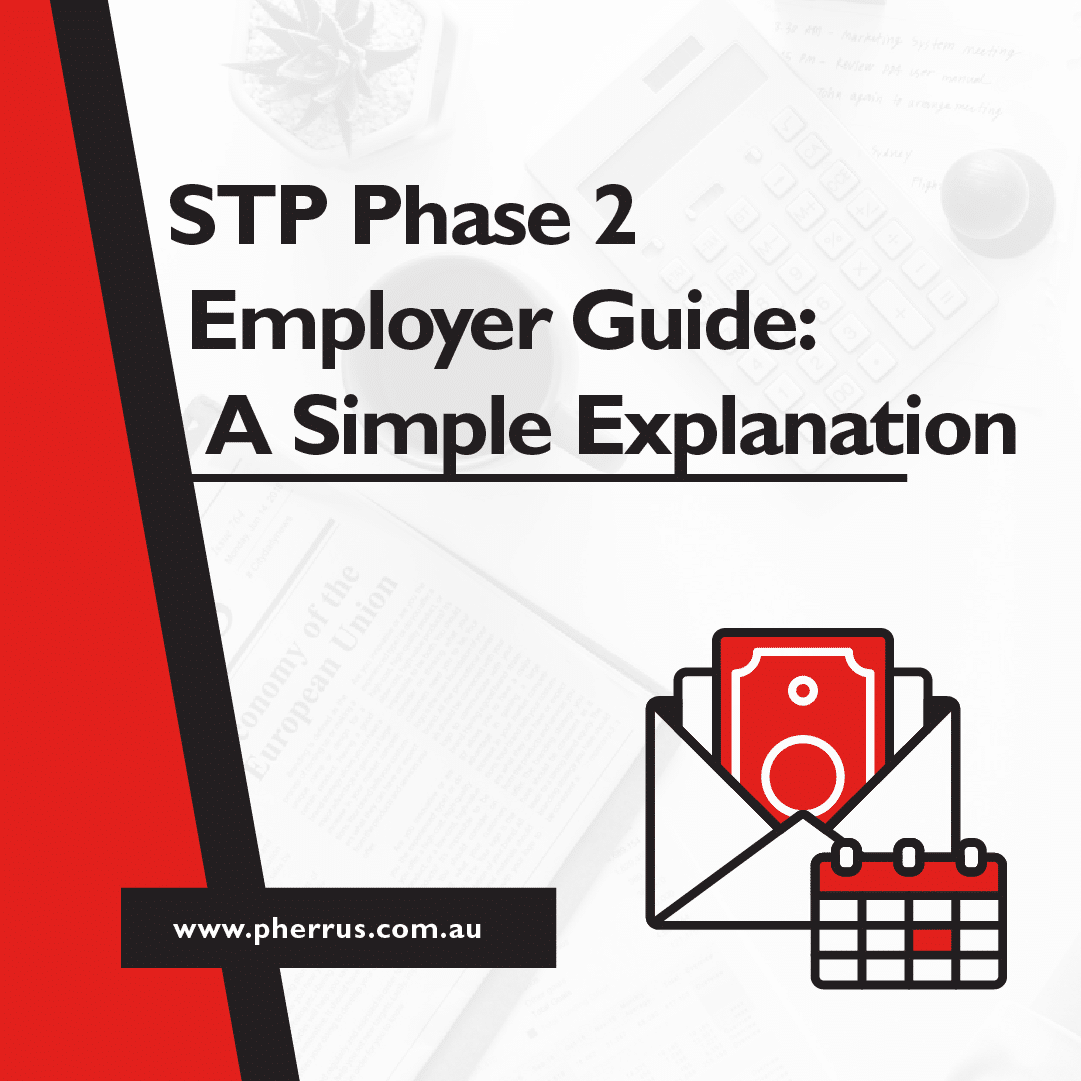Are you paying the right amount of income tax? In a surprising number of cases, businesses and individuals are paying more tax than they need to!
Here we take a look at the current Australian tax rates, as well as what you can do to ensure you’re not paying more tax than you should be. Working out your tax bill accurately, as well as adopting legal, tax efficient ways of operating, can be challenging.
If in doubt, we recommend obtaining appropriate professional advice. It’s very important to comply with ATO tax requirements, no matter how onerous they might be. Pherrus Financial Services are a team of highly experienced tax specialists who are able to help you create a tax saving strategy that works for your individual circumstances.
Tax brackets Australia
The following are the current tax brackets for Australian residents need to pay. Note that if you are not an Australian resident, but are earning income in the country (either through employment, a business or investment), then you may need to pay tax on it. Get in touch if you have complex income streams and we will be happy to advise.
Corporate tax rates
As at 2020/21, the new corporate income tax rates for Australian businesses are as follows:
COMPANY TAX RATE
26% BASE RATE ENTITIES / SMALL BUSINESS ENTITIES
TURN OVER OF LESS THAN 50 MILLION
30% STANDARD RATE FOR ALL OTHER CORPORATE ENTITIES
INDIVIDUAL TAX RATES
TAXABLE INCOME TAX PAYABLE
0 – 18,200 Nil
18,201 – 37,000 Nil + 19% of excess over 18,200
37,001 – 90,000 3,572 + 32.5% of excess over 37,000
90,001 – 180,000 20,797 + 37% of excess over 90,000
180,001+ 54,097 + 45% of excess over 180,000
Does not include Medicare levy (2% of taxable income, subject to concessions for low income earners and various exemptions.
Personal income tax rates rise steeply for individuals whose income is above $37,000 pa. Given that the average Australian, full-time annual salary is around $82,436, there are large numbers of people who are paying 32.5% tax and higher – a significant proportion of their earned income! For businesses, failure to manage variables such as structure, asset management and deductions can lead to much higher tax bills than necessary.
Luckily there are ways to reduce your taxes, especially if you’re within tax brackets Australia loves to avoid. Take a look at some of our most tried and tested suggestions – even if you believe that you’ve explored all the options, there are often additional expenses you can claim, or alternative investment strategies which could mean a welcome tax saving.
1. Change the company structure
The vast majority of businesses in Australia fall into one of the following categories: company; sole trader (self-employed); partnership; or trust.
Each of these structures carries its own set of rules and regulations, including differences in ATO tax rates. Many smaller businesses start off operating in a sole trader format: whilst, in the short-term, this can work well, as businesses grow, the sole trader vehicle can result in excess tax on eligible income. Similarly, as companies evolve, they may wish to consider diverting some of their profits into a trust, in order to reduce tax obligations moving forward.
If you are considering changing business structure, it’s usually best to talk through your ideas with a qualified accountant – every business is a little different, and what works for one may not be the best route for another.
In addition, future plans for how the business is going to develop have a significant impact on the type of structure that’s going to be most appropriate.
2. Claim your expenses
Possibly the most well-known way to reduce the level of tax you pay, expenses relate to costs necessary to do your job, but which haven’t been met by your employer.
For businesses, expenses include everything necessary for the business to operate. Almost anything may count as a legitimate expense. Typical examples include :
- travel.
- accommodation.
- meals/drinks.
- phone bills.
- uniforms/footwear/mandated safety equipment.
- books/journal subscriptions/periodicals.
- home working costs.
- equipment hire.
- the cost of work related training or obtaining necessary certifications.
- purchase of tools, furniture, supplies or similar for work use. Examples include: knife sets (for chefs); hair dressing combs and scissors; coffee or milk for office use.
In addition to the above, businesses may also claim :
- rent
- utilities
- asset purchase
- salaries
- property acquisition (note that property acquisition is a complex area when it comes to taxation. In some circumstances, property acquisition can result in tax reductions, whilst in other situations, you could end up with an additional tax burden. We advise you to check with a tax professional before proceeding with a property purchase).
- professional fees: the bills for your accountant, consultant, solicitor or similar are tax deductible.
Note that for an expense to be declared, you need to be able to demonstrate that you purchased the item (a receipt), and also show that you paid for it (whilst smaller items can be paid for in cash, larger items need to be paid for by credit or debit card, bank transfer or some other traceable method.
If you are an employee, it’s usually the case that your employer will reimburse you on a like-for-like basis. If you are self-employed (sole trader), a company, or a trust, you will need to keep track of your expenses as you trade.
It’s vital to make sure you keep all relevant receipts and invoices, as these are needed to evidence your expenses before they can be included as part of the deductions on your tax return. If you’re not sure whether an expense is eligible, still keep the relevant receipt, just in case. ATO are able to answer tax queries, or, for a more personalised approach, we are happy to help.
3. Pre-paying tax deductible expenses
If you are concerned that your personal income is likely to nudge you into a higher tax bracket, it’s worth considering pre-paying tax deductible expenses.
4. Salary sacrifice can save you tax!
A salary sacrifice essentially involves agreeing to pay for some items directly from your pre-tax salary. What this means is that your taxable salary is less.
Typical salary sacrifice items include super and company cars. Salary sacrifice to increase super contributions is of particular interest: when you salary sacrifice into a super fund, your employer is still required to calculate your super entitlement based on your initial salary figure.
They also still need to contribute the same amount as previously. Super contribution levels can be revisited and revised periodically, enabling them to be tailored to your current and longer term financial circumstances.
In light of the recent government announcements regarding superannuation early release options for individuals adversely affected economically by the Covid-19 pandemic, it’s worth seeking expert advice on your current super contributions and plans.
5. Set up a trust
For higher earners, a discretionary family trust fund can work well. Higher earners can transfer ownership of property or capital to the trust. Whilst this means the asset or capital no longer belongs to them, they can retain control over it by becoming the trustees of the trust. Whatever taxable income the trust makes (for example interest on capital or proceeds from an insurance policy), can be distributed to family beneficiaries.
This benefit of doing this is that trustees can distribute taxable income to individuals (usually children) who are in a lower tax bracket. Not only does this mean that higher tax bracket earners can reduce their tax obligation (and may even be able to take advantage of one of the lower tax rates), it’s also a good way of providing other members of the family with an income.
Note that family discretionary trusts do have some pitfalls, not least that trustees are not totally free from paying the tax on the trust’s profits if they are not distributed to beneficiaries.
6. Get clued up on Capital Gains Tax (CGT)
When you sell a property or other significant investment (such as company shares or an investment), you will hopefully sell for a profit. Once various deductions have been made, you are then required to pay tax on the profit sum, in exactly the same way as you would any other income stream.
Given that the amount of income could be significant, there is the potential to pay an eye-watering amount of tax! Luckily, there are a number of different strategies which both businesses and individuals can adopt that will reduce tax obligations.
These include CGT deferral, acquisition of a replacement asset or taking advantage of various exemptions that relate to CGT. Businesses may wish to consider taking advantage of: 50% CGT active asset reduction; deductions on depreciating assets; small business rollover; and/or the 15-year exemption. Get in touch with us to find out more about how these regulations could be applied to your business.
7. Claiming bad debt against tax obligation
Bad debt is a problem that plagues many business owners. There are always customers who, for whatever reason, can’t or won’t pay.
If a business has made all reasonable attempts to collect the debt, but failed, the cost can usually be deducted from taxable income.
To take advantage of this deduction, it’s important that appropriate records have been kept, detailing efforts made to recover the debt as well as evidence that the debt was incurred the first time.
8. Restructuring borrowing
Whether you have a commercial or an individual debt, it’s sometimes possible to reduce the amount of tax you need to pay by restructuring the borrowing.
This may range from switching loan providers through to changing the type of borrowing, altering the timing of the borrowing or considering selling assets in order to reduce debt levels.
For example, in some cases it may be possible to offset income accrued from savings against the interest due on a mortgage loan, provided both financial products are held with the same provider.
If you are considering taking out a loan, or have debt already and are eager to find ways to reduce the burden it places on your individual or corporate finances, we are here to advise.
9. Negative gearing
When the costs of maintaining an asset are greater than the profit which the asset provides, the losses can be offset against a tax bill.
Whilst at first sight this appears counterintuitive as a tax efficiency tool (after all, an asset that’s not making money could arguably be seen as a liability), it can be a useful way of reducing tax in a particular tax year.
For example, essential repairs on a rental property could be carried out in a year when it would be advantageous for tax purposes to have a smaller amount of profit.
In the longer term, negative gearing can be a powerful tool for tax efficiency, particularly when multiple assets are involved.
Note that there are numerous tax regulations which can affect a negative gearing scenario – if you are in any doubt about the legitimacy of your proposed deductions or the value of your asset, it’s important to get appropriate advice before submitting your tax return.
10. Meticulous record keeping
In order to claim any type of tax deduction, it’s vital to have appropriate records available to evidence the deduction.
This may be as simple as a receipt, right through to contracts, documents of sale, asset inventories and previous tax returns. Unfortunately, particularly in the early days, small businesses may not always have the right systems in place to capture all the necessary information. If you cannot evidence a deduction, it can’t be included in your tax return.
Don’t miss out! If you suspect that you’re not capturing all the information needed to complete a tax return accurately, act now. Whilst a full-time bookkeeper may not be a financially viable option, employing a virtual bookkeeping service, suitable software or the services of an accountant are all potential alternatives.
Every year, businesses end up paying more tax than they need to because they don’t have the right paperwork in place. Appropriate bookkeeping makes compiling your tax return easier, plays a key role in spotting areas where tax savings could be made and assists in forward business planning.
For both individuals and businesses, having access to high-quality, accurate financial information in a timely manner is advised. Often, strategies to reduce the income tax Australia businesses or residents pay are longer term.
Whilst some reductions can usually be made when considering accounts for the current or previous financial year, good planning is the key to on-going tax efficiency. Even if you are confident you’ve got every tax angle covered, a periodic review of your financial affairs can be beneficial.
From calculating your income tax rates through to providing advice on planning your long-term financial goals, Pherrus Financial Services can provide the professional accounting assistance you need. Get in touch to find out more.

![Tax Brackets Australia – The Definitive Guide to Tax Brackets & Tax Strategies [2020 update]](https://www.pherrus.com.au/wp-content/uploads/2021/02/Tax-Brackets-Australia-–-The-Definitive-Guide-to-Tax-Brackets-amp-Tax-Strategies-2020-update.jpg)


